Why You Should Use a "Cue Sheet" For Your Next Triathlon
At Augusta 70.3, I did something I'd NEVER done before...
Triple Threat Life is an email newsletter with practical triathlon tips and mindset techniques to help everyday athletes succeed. Some installments are free. Some benefits are for paid subscribers only. Sign up here.
I raced at Augusta 70.3 one week ago and did something I’d NEVER done before in a triathlon…
You might be asking yourself: Hey Brittany, what about your favorite phrase- “Nothing new on race day,” hmm?
Well, this is a bit of an exception to that time-honored rule, and it’s something I 100% encourage you to do at your next race!
I used a “cue sheet” on the bike.
What’s a cue sheet?
Why should you use it?
How do you make one?
I’ll answer all those questions and more in today’s post.
If you’re new here, Hi! My name is Brittany, and I’m a triathlete (9 x 70.3, 2 x 70.x WC qualf, 2 X IM) In my day job, I’m a journalist who writes for publications like- Triathlete Magazine, Outside Run, XTERRA, IRONMAN, and more. I get to connect with pro athletes, coaches, and experts on a daily basis, and I want to share what I’ve learned with you! You can learn more about me and the mission behind Triple Threat Life here.
What’s a cue sheet?
If you’ve ever watched the Tour de France, you might have noticed that many riders have an interesting-looking sticker on the top tube of their bikes. The sticker typically contains an infographic with the course elevation, distance, location of aid stations, and sprint points.
Basically, it includes important details that will help a cyclist ride to the best of their ability.
In our race report from Augusta 70.3, I hinted at this cue sheet and how much it helped me stay focused and the time pass more quickly. It’s something my coach uses when she races, especially on unfamiliar courses like IRONMAN Lanzarote, and she recommended we try it as well.
“Given the challenging nature of this course (IM Lanzarote) and knowing I would be out there for a longer duration than a typical Ironman, I decided to break down the course into smaller, more manageable segments for pacing. I wrote down the mileage for each segment on a piece of paper and taped it to my handlebars. This allowed me to regularly check how long each segment was before the next turn. I’ve found this to be a really effective way to make the miles pass more quickly, rather than focusing on the total distance covered or the distance still to go.”- Marni
Why should you use a cue sheet?
Using a cue sheet gives you an advantage; because, in order to make one, you have to study the course! For example, most athletes (even veterans) go into a race having done minimal course recon.
Sure, they probably know the elevation gain and how many laps there are, but that’s where their course prep ends. If this is you, don’t feel bad! This is what I used to do too… until my coach taught me this trick.
By knowing which areas of the course have hills, descents, turns, and out and backs, you can create a strategic plan for how to better execute the course. This is what my coaches like to call “Terrain Management.”
Does it really help that much?
Yes! Let’s take a practical example from an Olympic triathlon we did a month ago. During the bike, Matt went back and forth with an athlete who rode a similar pace. They were roughly the same size/weight. Matt and the athlete caught up after the race and were comparing their stats on Strava when we discovered the guy averaged about 40 watts more than Matt on the bike, but their time splits were almost identical...
Now, this difference can be due to other reasons, like Matt’s aerodynamic position on the bike, but it’s also because Matt is really good at managing terrain. He doesn’t spike his power too high on hills. He takes full advantage of the downhills by using a bigger gear. He can corner at speed.
Having a high FTP or being able to push a lot of watts is great, but the goal of a triathlon is to go as fast as possible for the least amount of effort. You have to run when you get off the bike, remember?
Especially in a 70.3 or Ironman, by riding the bike smarter, not harder, you can save those heartbeats for when you need them in the later stages of the run, while still riding a smart, strong bike split.
For those of you who get a bit distracted (me) on long bike rides, a cue sheet is also a great tool to help you stay focused. When you break apart the course into manageable sections (like 8 miles, 10 miles, 12 miles, instead of 56 miles) it’s easier to stay in the present moment and ride that section of the course to the best of your ability.
How do you make a cue sheet?
Let’s use Augusta 70.3 as an example. There’s 1,800 ft. of elevation on the 56-mile bike course. Nothing too terrible. But you have to look at the course map to see where and how that elevation occurs.
At this race, there were 6 climbs, spaced 4-5 miles apart, lasting between 3-5 minutes, all within the first 37 miles of the bike ride. Then, there was a flat section with an out-and-back at the airport that can have some wind. Once you get to mile 40, you head back to town and have a few rollers at the end.
My cue sheet looked like this.
What was the result?
I stayed more present, because I knew I had only a few miles in between each climb. I rode the course better, because I was able to mentally check off each section. It was my best bike power for a 70.3, at a lower heart rate than 70.3 Gulf Coast in May of this year.
You can also adapt this idea by making a nutrition sticker for your bike. I used this strategy at Ironman Florida. This ensured I stayed on track and finished each bottle within a specific timeframe.
In this post, DC Rainmaker talks about the nutrition stickers Team Lotto Dstny puts on their bikes for the Tour de France.
Making a cue sheet or nutrition sticker is a great idea for your next race, and it’s easy to do! Just take a piece of paper or a Post-It-Note, cut to fit, and use clear packing tape to attach it to your top tube.
Voila! Better bike split incoming.
Will you do this for your next race?
If you’re new here, each week, I share practical tips, pro strategies, and mindset skills to help you:
Train smarter and race stronger
Build mental strength and confidence
Actually enjoy the process (yes, even swimming)
Free subscribers get:
Weekly newsletter
My Triathlon Packing List and Gear Guide downloads
Paid subscribers get:
FREE Tri Smarter, Not Harder e-book
Discounts on future e-books and courses
Bonus articles, guides, and videos
Exclusive discounts on over a dozen premium gear & nutrition brands
Monthly expert webinars with replays



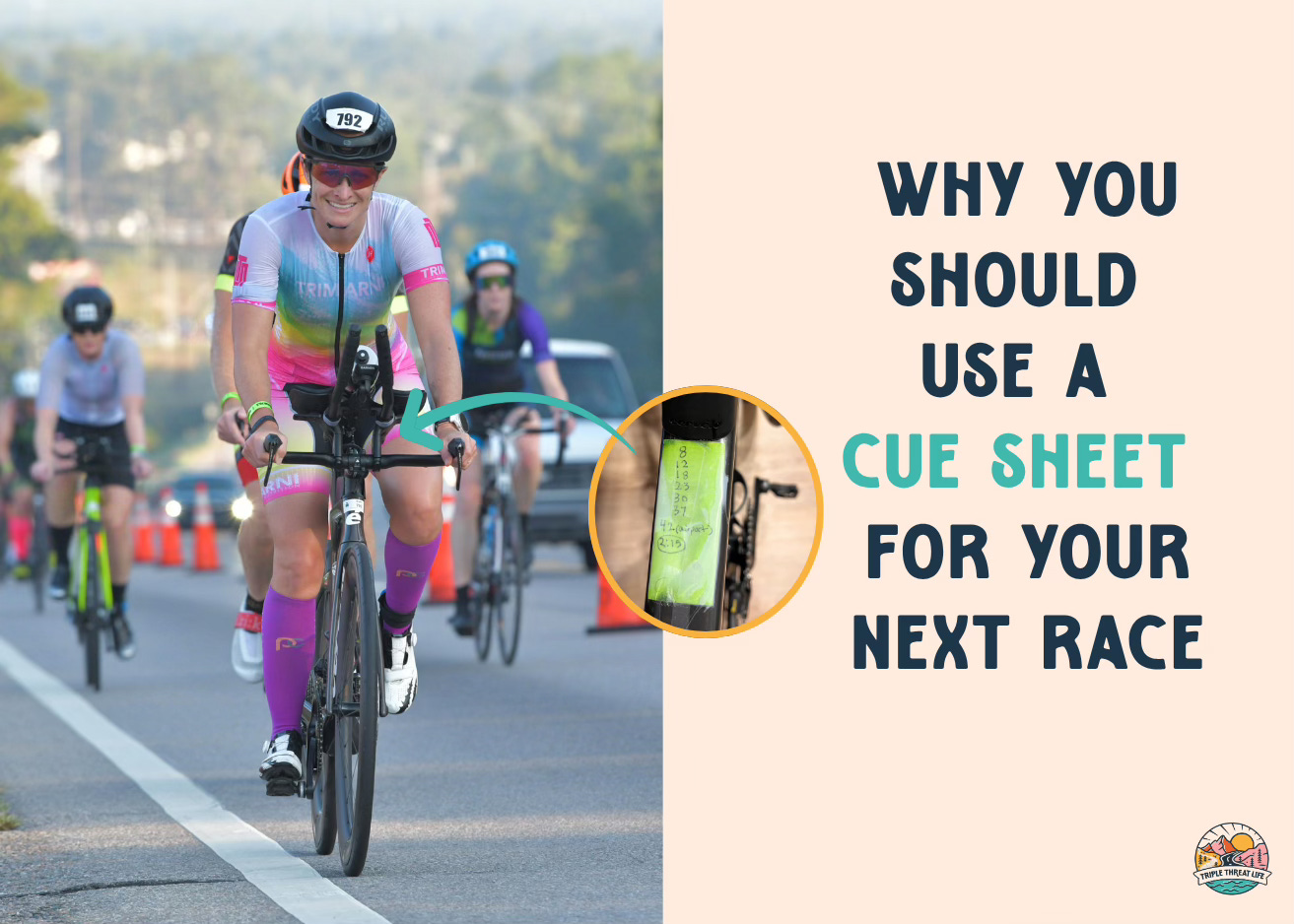
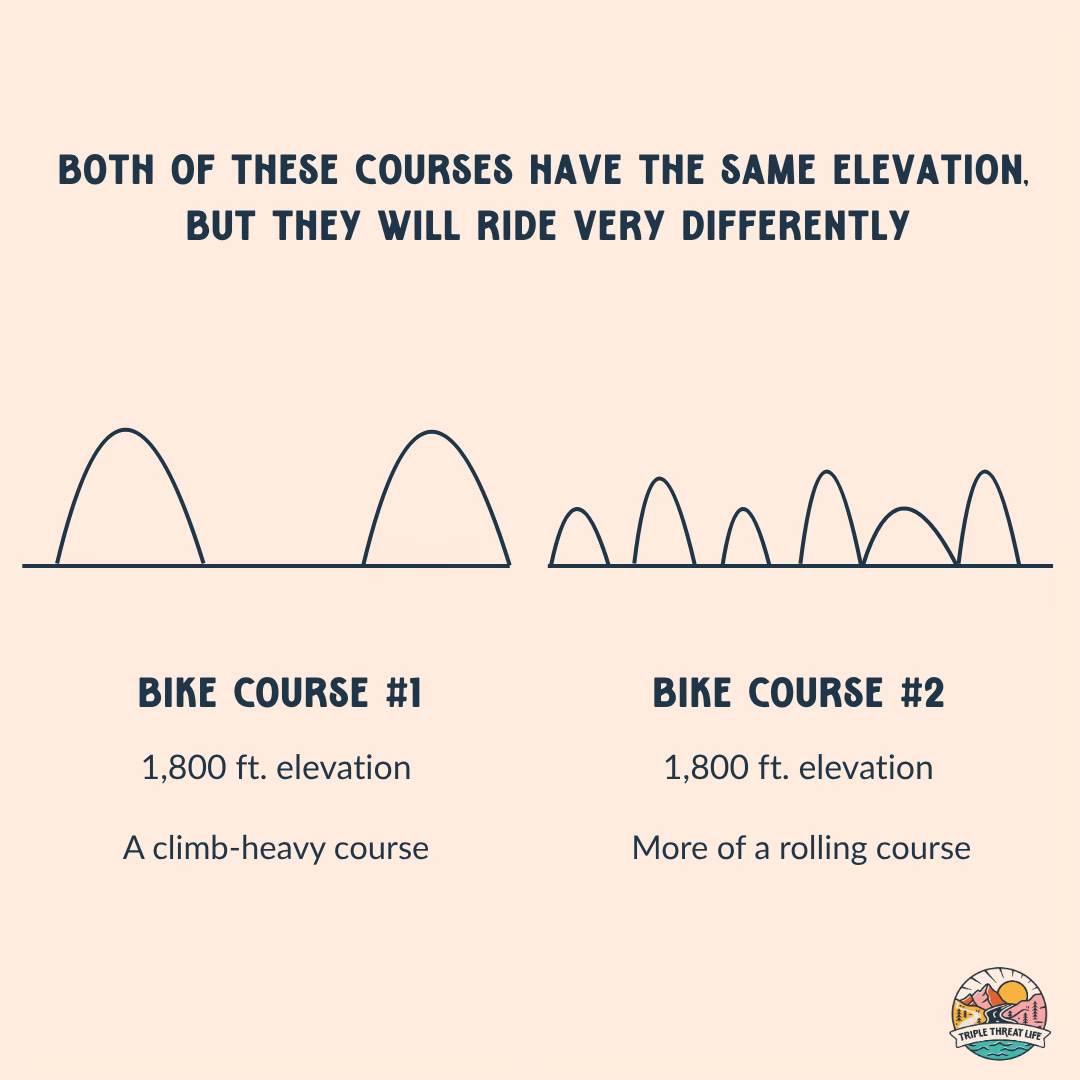
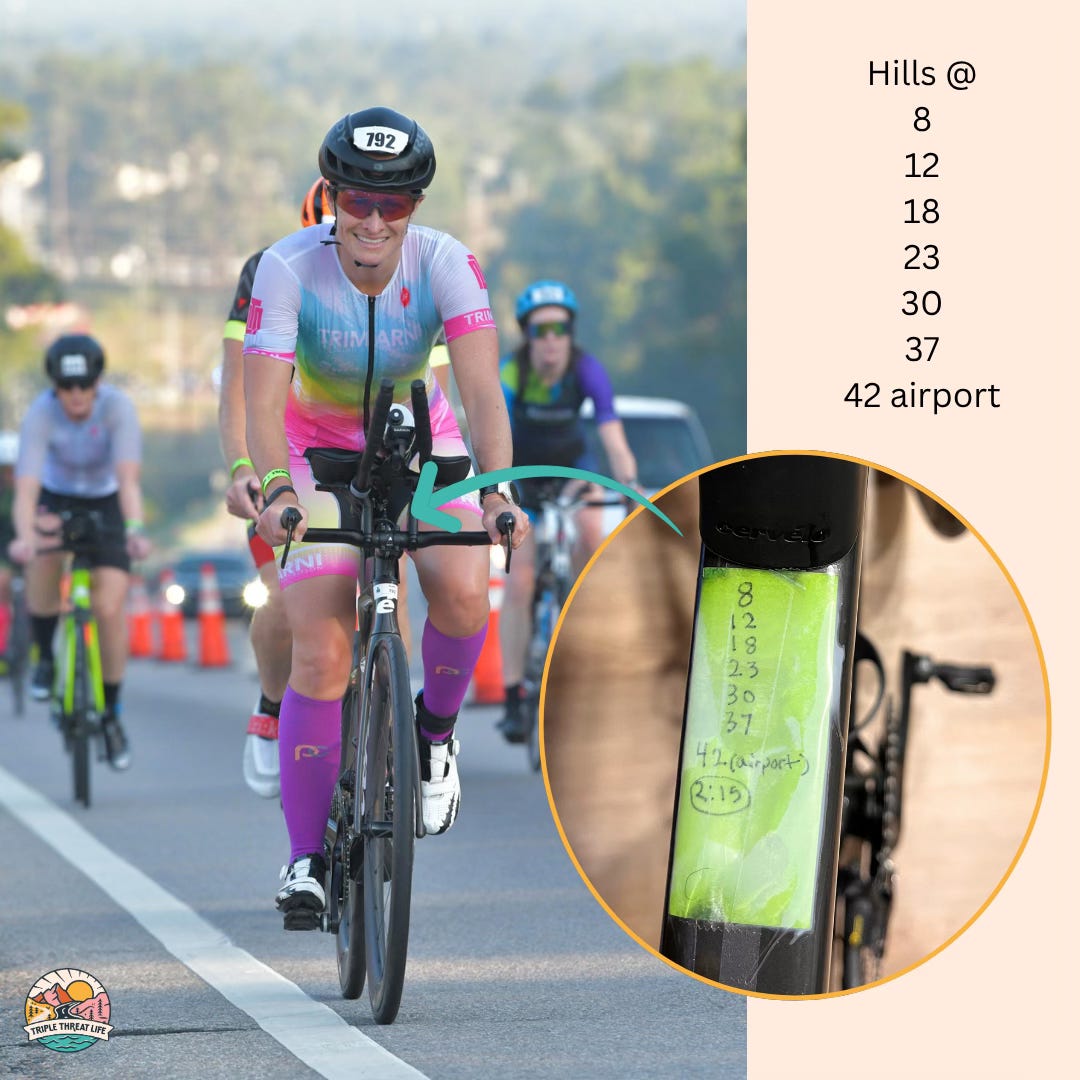
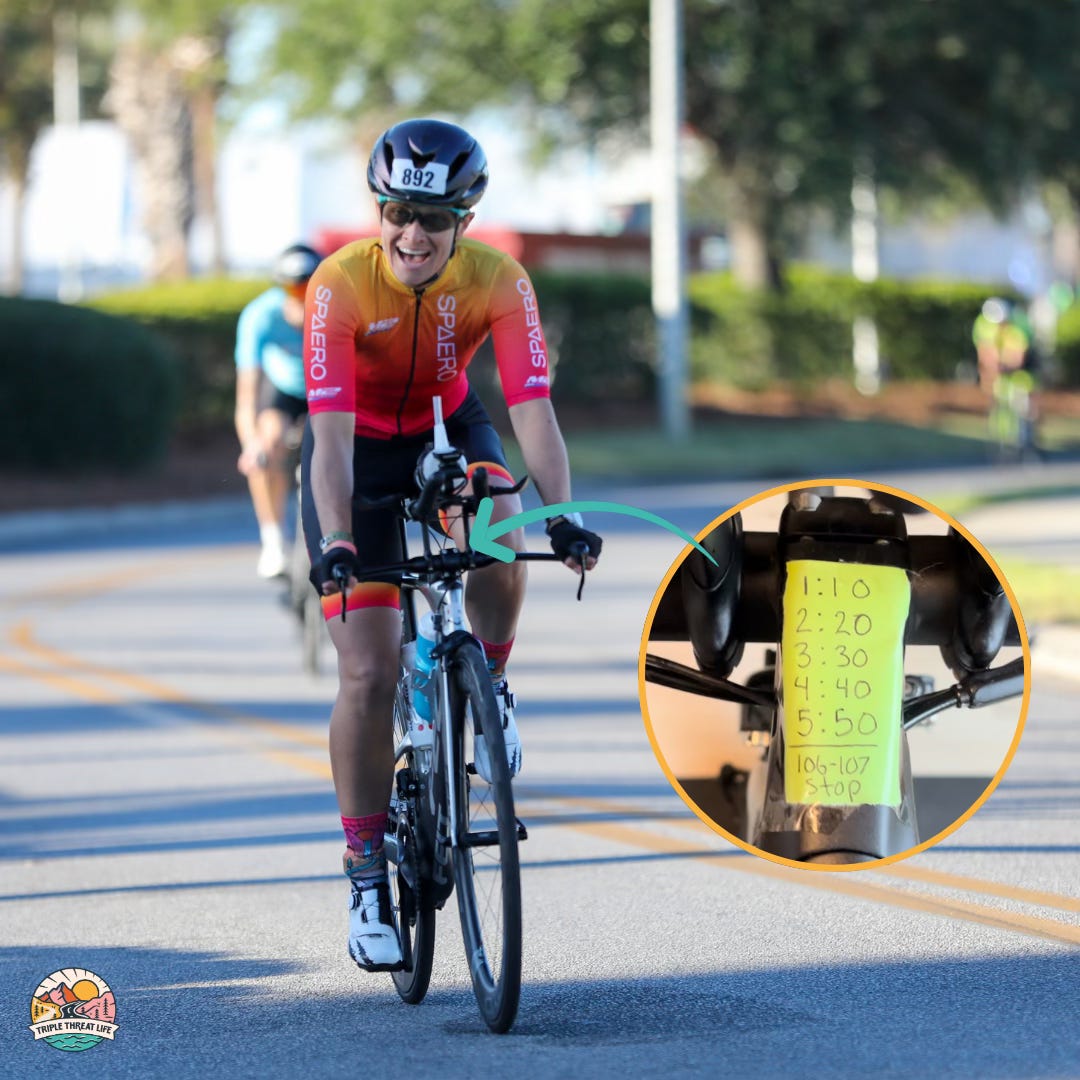
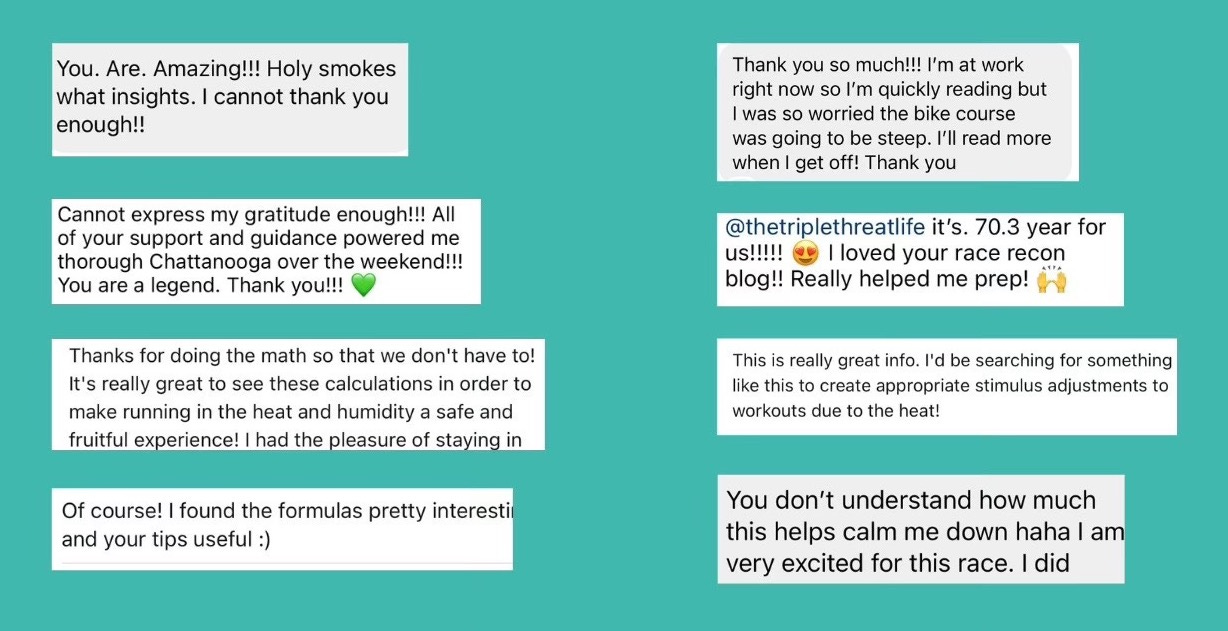
II tend to let my mind wander when I ride (and when I run) so a cue sheet would, I think, be a huge benefit for me. Thank you